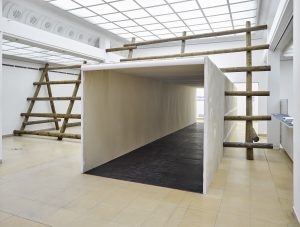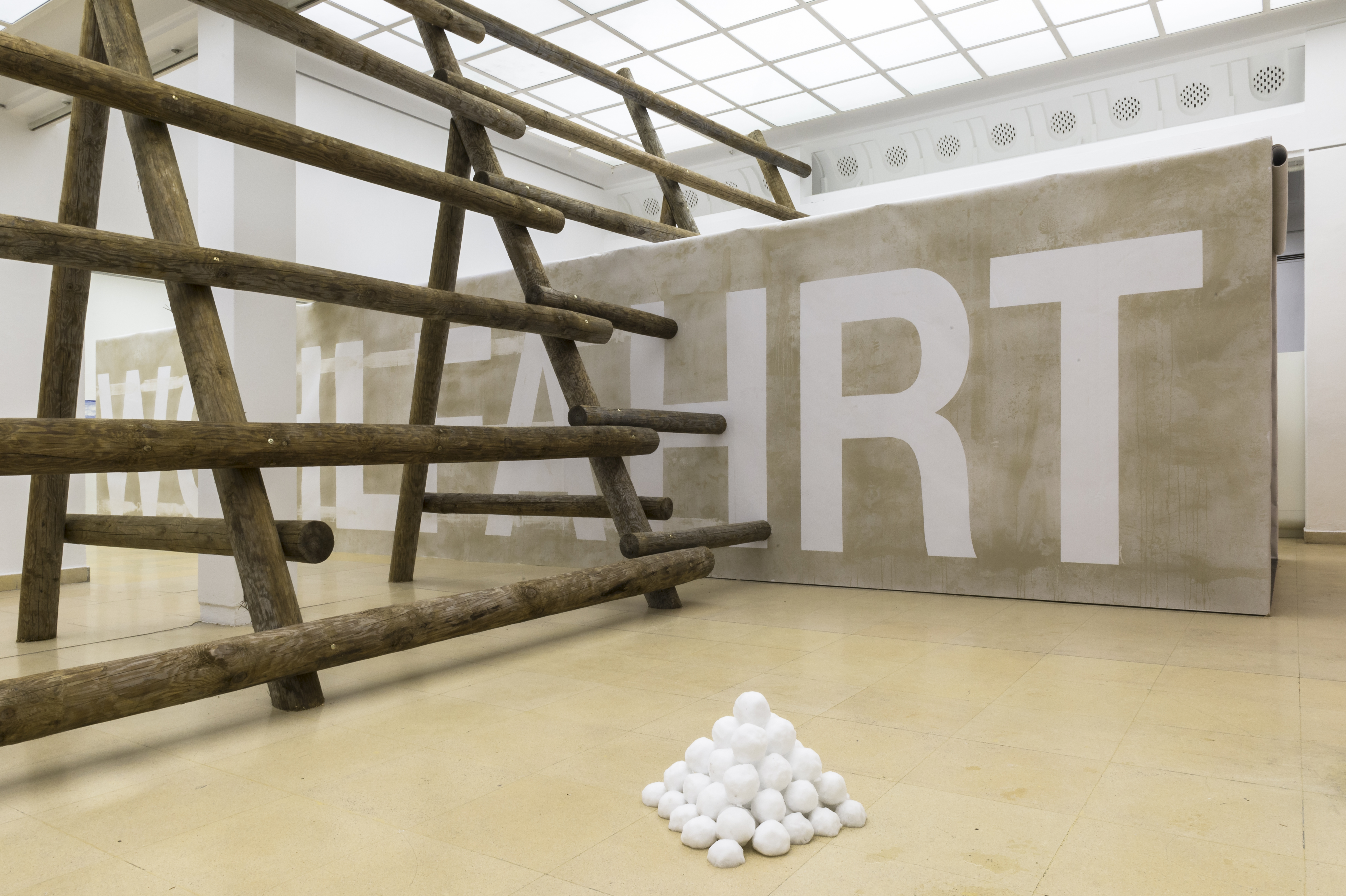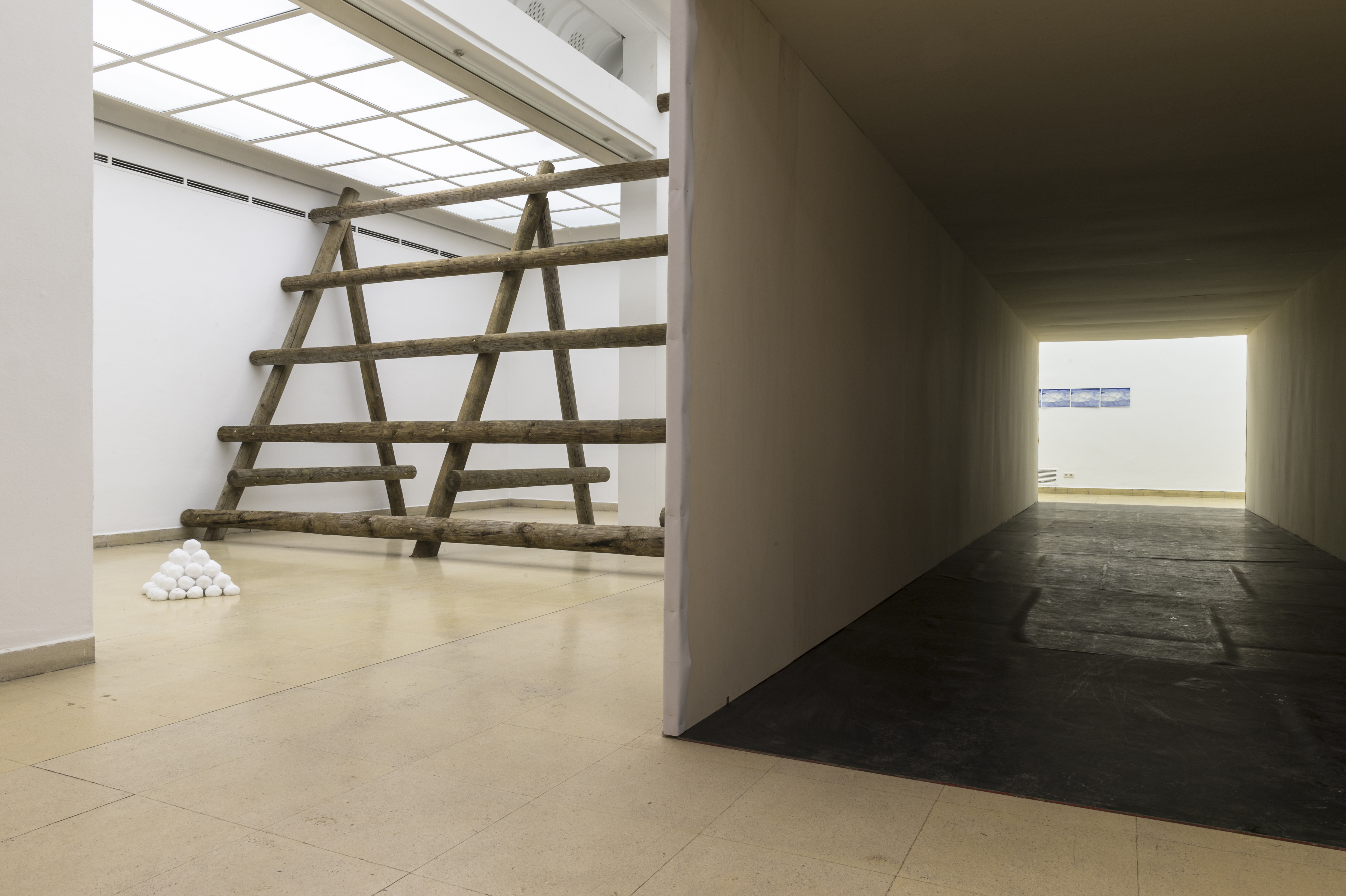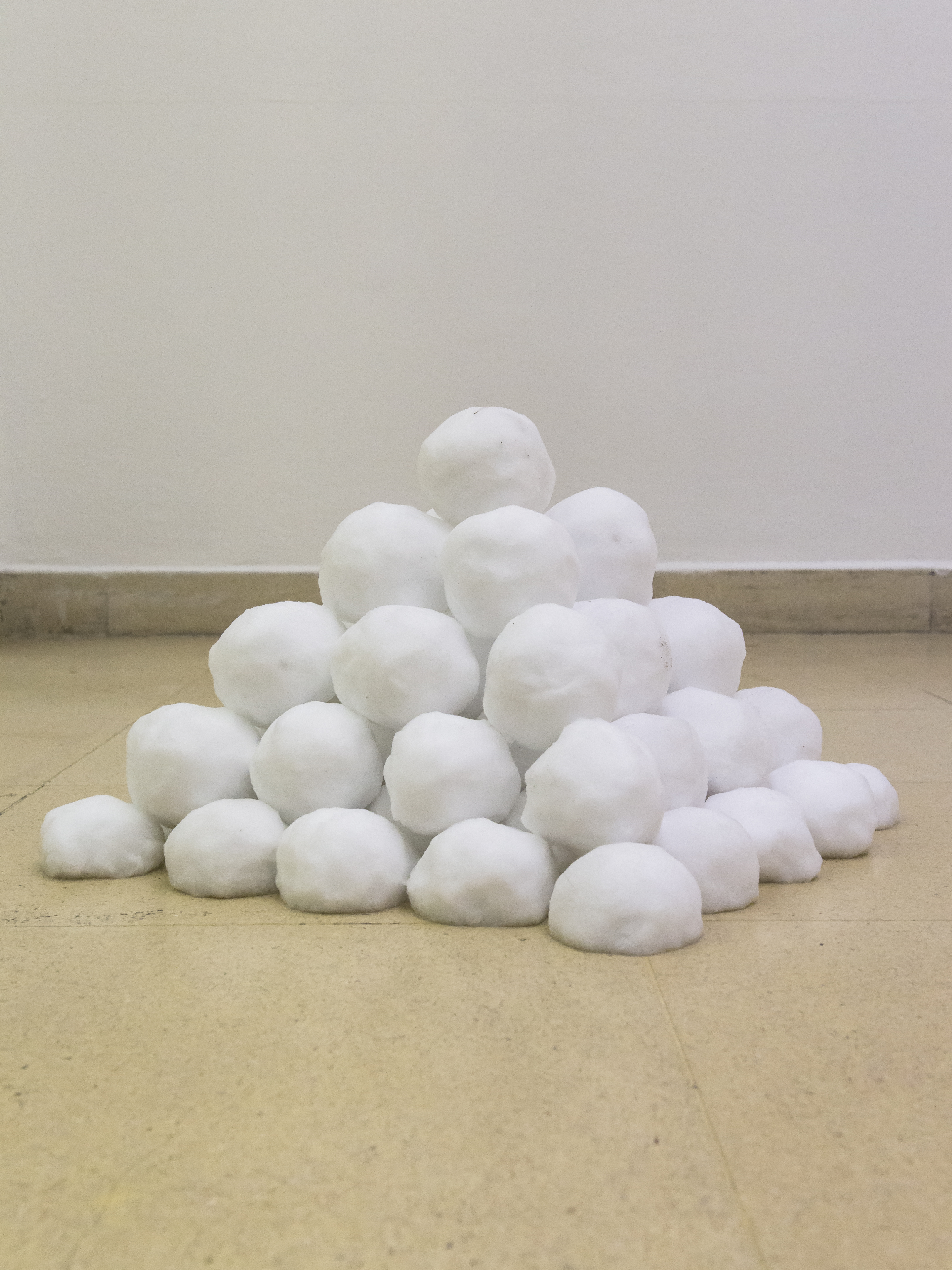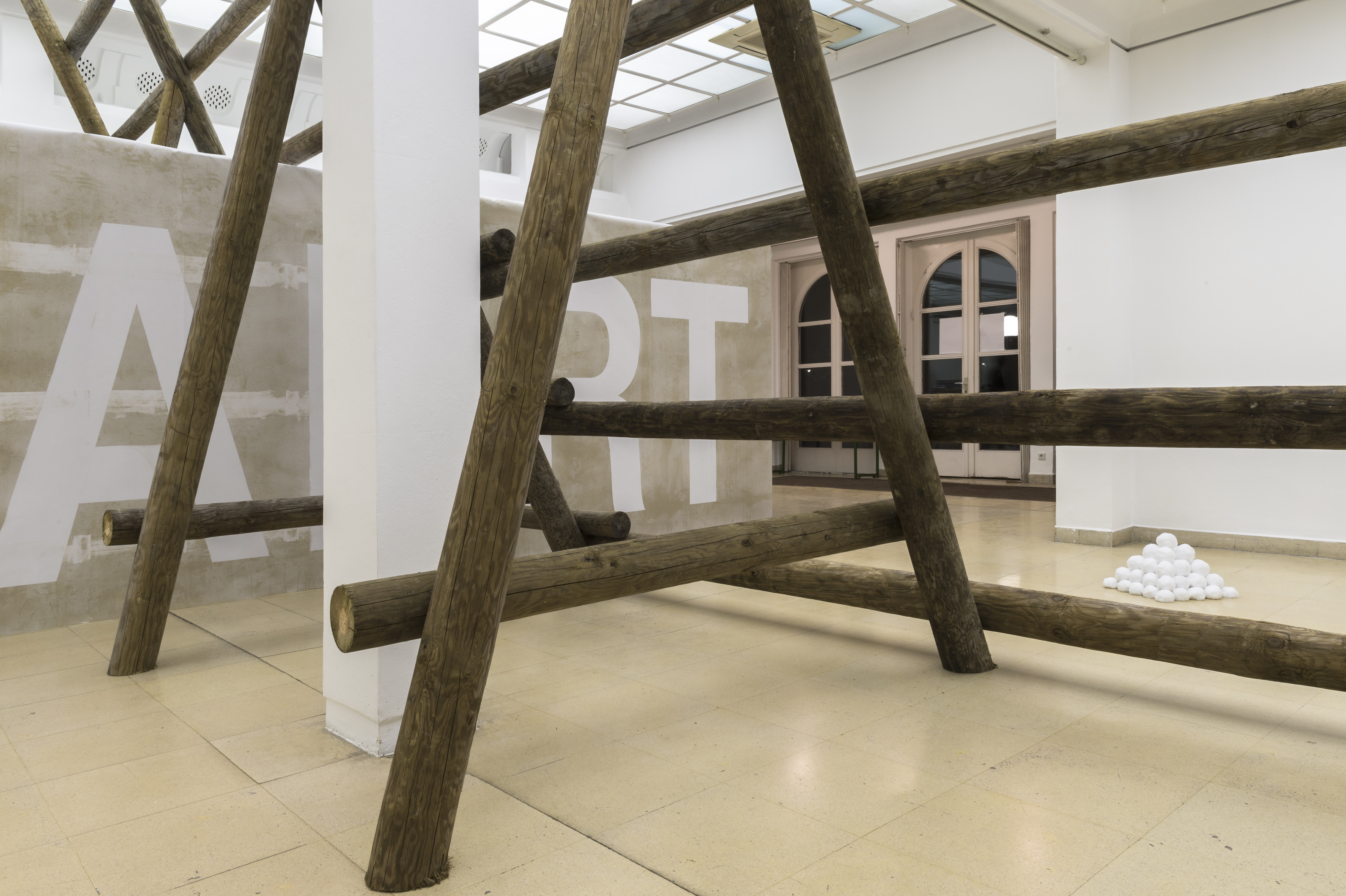Transittradition
Hannes Zebedin
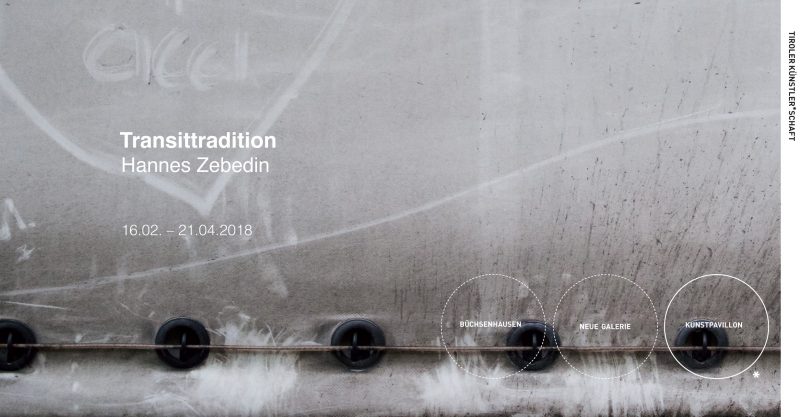
For some time now, Hannes Zebedin has been pursuing his intense interest in the Alpine-Adria-Region and its geopolitical structures. In the exhibition Transit Tradition Zebedin uses two phenomena that shape the landscape of the Tyrolean Alpine area. These are avalanche barriers and the loading areas of trucks.
Avalanche barriers are constructed to prevent catastrophes. The danger of avalanches is a natural phenomenon that the local population need to live with as best they can; however, the extent of the danger is being heightened due to the urbanisation of nature, tourism, and climate change.
Transit traffic is a fact of international economic production inscribed into the landscape. Starting out from motorization during the 20th century, transport as a whole is symbolic of the exchange of goods aimed at devloping the global economy and subsequently social prosperity. The market’s own logics and a sole fixation on them mean that the neo-liberal terms of this economy serve only very few who profit, while the majority of the population go away empty-handed.
Using the two elements of avalanche barriers and (goods) loading areas, as well as other resultant works, Zebedin seeks to discuss contemporary power systems in our society, which push towards prevention on the one hand and facilitation on the other. It must be asked whether these tactics serve the common good.
Entering the Kunstpavillon it seems as if there has been an accident here, with a truck crashed into a wooden avalanche screen. Prosperity and welfare, economic growth and the protection of the civil society have become literally entangled in the monumental installation Transit Tradition. The needs of prosperity are satisfied with goods and services: more than two million trucks drive through the Brenner Pass each year, for example. Along the transit routes, the population’s well-being is endangered by noise and fine dust pollution. Besides these detrimental health effects, it is possible already to discern consequences of climate change for flora and fauna. The glaciers are receding, the alpine vegetation is changing. In the long term this will also have an impact on the forestry business and the constitution of the (protective) forests will change, as it will become too warm in the alpine regions for the most widely used tree, the spruce, over the coming decades. For his setting Aufforstung (Wohlstand) [Reforestation (Prosperity)] Hannes Zebedin plants atlas and Lebanon cedars – Mediterranean conifers that will soon be at home in our latitudes – in truck tyres and places them opposite the truck bed of the installed accident scene; on the truck tarpaulin we read the word WOHLFAHRT (WELFARE).
The only way into the rear of the exhibition space leads the visitor through the truck towards images of an avalanche happening – video stills processed as Risoprints. As a natural force, the avalanche of dust is both threatening and aesthetic. In a niche – in the off, so to speak – Zebedin shows the full video: in which we see how a cameraman underestimated the danger of the avalanche and is forced to change from a passive filmer to a participant in order to escape. The artist uses this sequence, which remained in his mind for many years, in order to convey an outline of ideas and pose the question of the individual’s responsibility.
The work Snowball Effect appears modest and brief in duration, so that its transitory quality contrasts with the monumentality of the avalanche barriers and the associated truck. A pyramid of snowballs indicates clearly how, in snowball systems, only the operators can win. The risks and damage occur to the cost of the players. Hannes Zebedin sees parallels here to the structures of fear and power in current politics, which deny the impacts of neo-liberalism and, coupled with political regression, contribute to a strengthening of nationalistic attitudes. The exhibition Transit Tradition, therefore, is a contemporary historical commentary, leading visitors through a drastic staging open to associations and so inviting them to think about the enmeshment of the global market and ecology.
Thanks to:
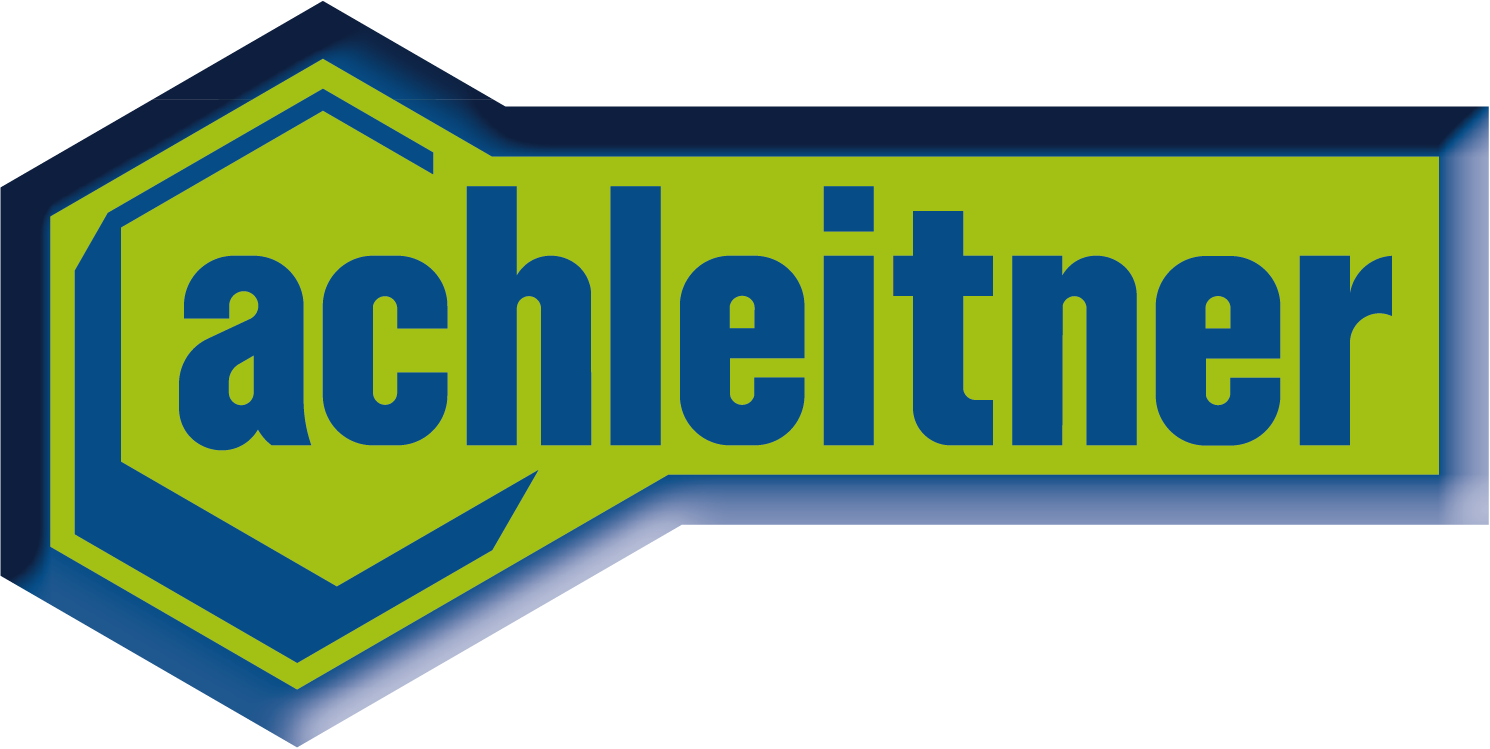
![]()

